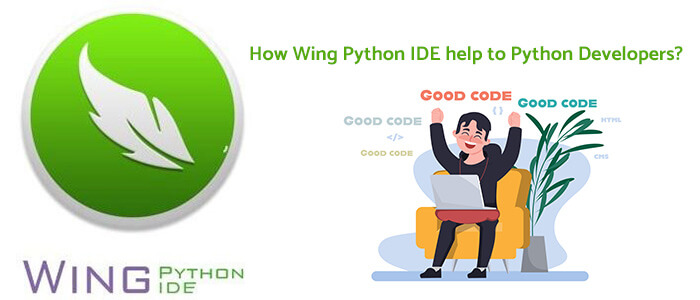
This article is for those python developers who want to improve code reformatting. We are talking about Wing Python IDE. So let’s learn how Wing Python IDE helps Python Developers?
Python is a language that provides some of the great advantages of designing apps. It gives excellent finished performance relative to other translated languages. We can easily use it in writing C++ and C expansion plugins, which is a huge benefit for using Python. The implementation of Java by Python is known as Jython, which allows combining Java and Python modules easily.
Wing Python has been enhanced with code reformatting changes, clearer handling of default async sentences, and tooltip functionality improvements. The Wing Python IDE has a smart editor and debugger. And the developers claim that it is quick, accurate, and pleasant for interactive Python creation. The wing is available in three models, a paid-for-version version with additional functionality and a downloadable Python IDE for students and hobbyists that loses out on Wing Pro’s more sophisticated features but features a simplified debugger and editor. There is also Wing 101, an extremely condensed Python IDE intended for novice students.
Approach to Growth Wing Python IDE
Initially, part-time work on Wing Python IDE began almost instantly in mid-1999. We knew it won’t be going to be so easy to compose a whole IDE and decided to make sure Python was still just as nice as it was then. It was built logically in Python by the IDE alone. It will teach us the definition and allow us the first customer while we build and debug Wing IDE with ourselves for python development services.
The modifications for this Wing edition begin with the reformatting of the codeIn addition to existing reformatting choices. The latest edition adds support for YAPF and Black and codes repartitioning. The reformatting alternative is available in a Source > Reformatting menu category, and the Editor > Auto-reformatting settings group will customize automatic reformatting.
The reformats start when the choices for PEP8 are treated correctly. When a folder with the new username is open, you can change a module and reformat remote code if the code is not updated. Failure to analyze async declarations is already accurate. Support for tooltips is another area for jobs. We can configure wait as a user interface choice before showing tooltips and now short the normal pause until tooltips turn up.
Increased support for virtual on Wing 7.2
It was accomplished by authorizing a command to be inserted in the Python executable, which triggers the environment. Help for Anaconda ecosystems has now been introduced. Wing 7.2 also incorporates Python 3.9 support and adds How-Tos to use the AWS and PyXLL Wing, making it easy to deploy python-m modules and enums 3 support. Without big device development work, we could build and supply the Wing IDE on Linux, Windows 98, XP, XDarwin, and Mac OS X with Solaris, including Free BSD.
We obtain strong feedback nowadays and well sell our commodity. But this was feasible through additional support and a two-person production team. The key advantages of using Python were overall efficiency, intraplatform distribution, efficiency, interoperability, rock-solid stability, and good support for new residential.
Deployment of Cross-platform
Wing IDE is working on different OSs and Windows of Posix. We were pleased with the way Python worked across platforms during the development process. It is possible to submit the same Python source or optimized Python byte code files to a consumer irrespective of the target device.
Production in mixed languages
Python is almost always quick enough, but the parser implemented so much overhead in a few instances. Both the Wing IDE simulator and code research engine have modules for highly CPU-intensive operation. To squash the pace as necessary, these modules had to be written in C. Fortunately, Python is built to allow calling among Python and C or C++ very simple. Thus, Python is certainly the easier language to play. JavaScript is a dynamic scripting language that installs on the job and is quick in utilizing big arrays.
Recent Blogs
Categories



